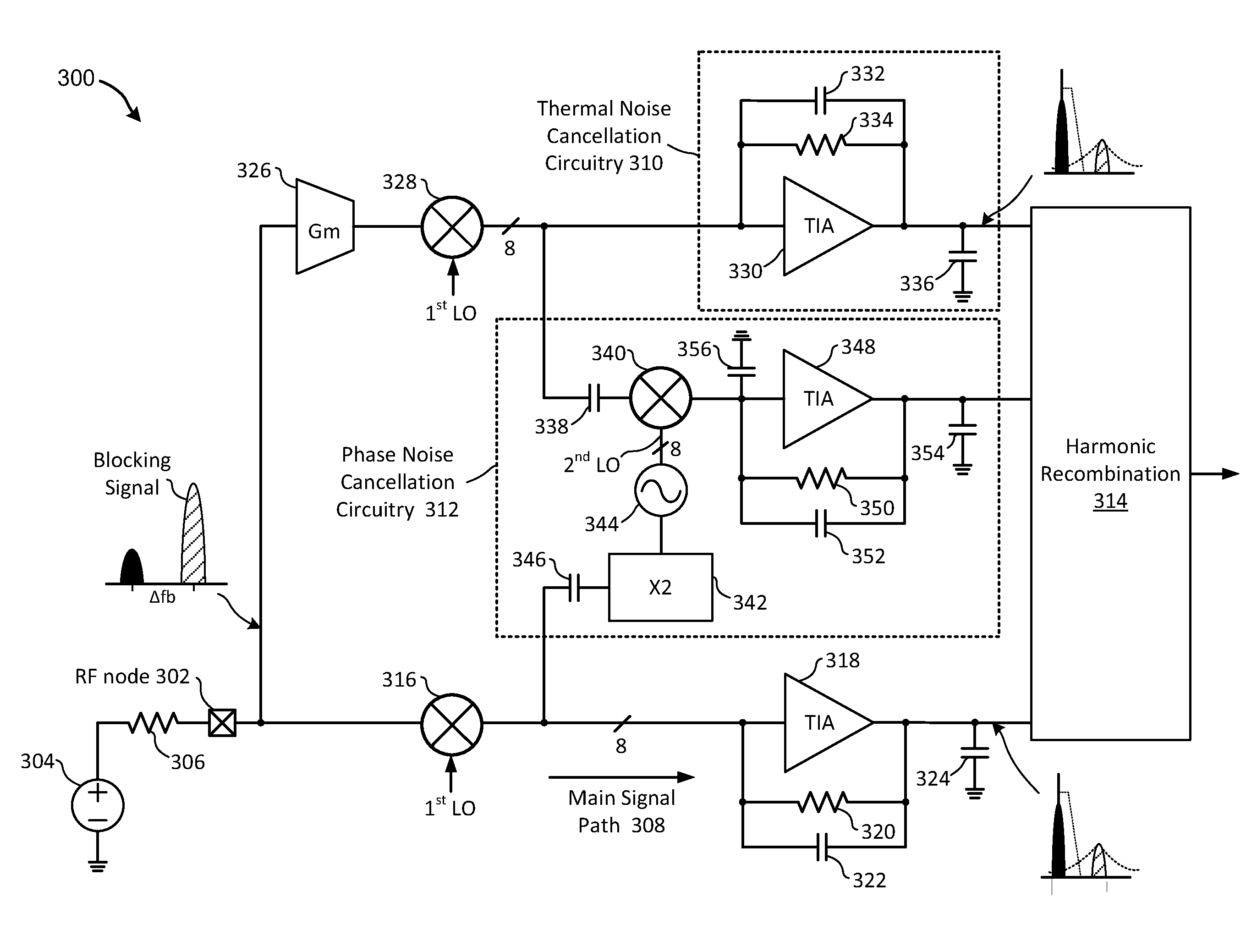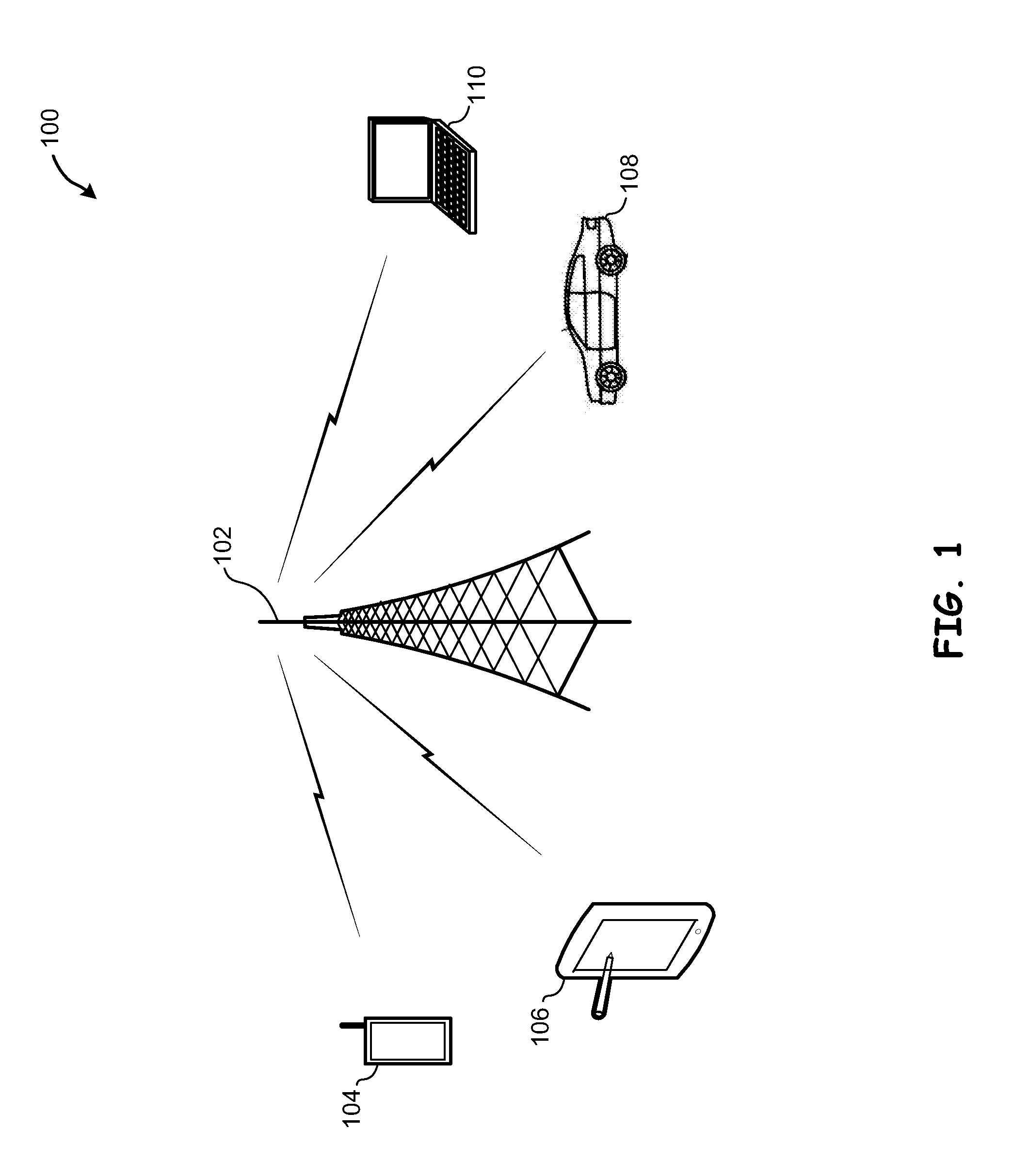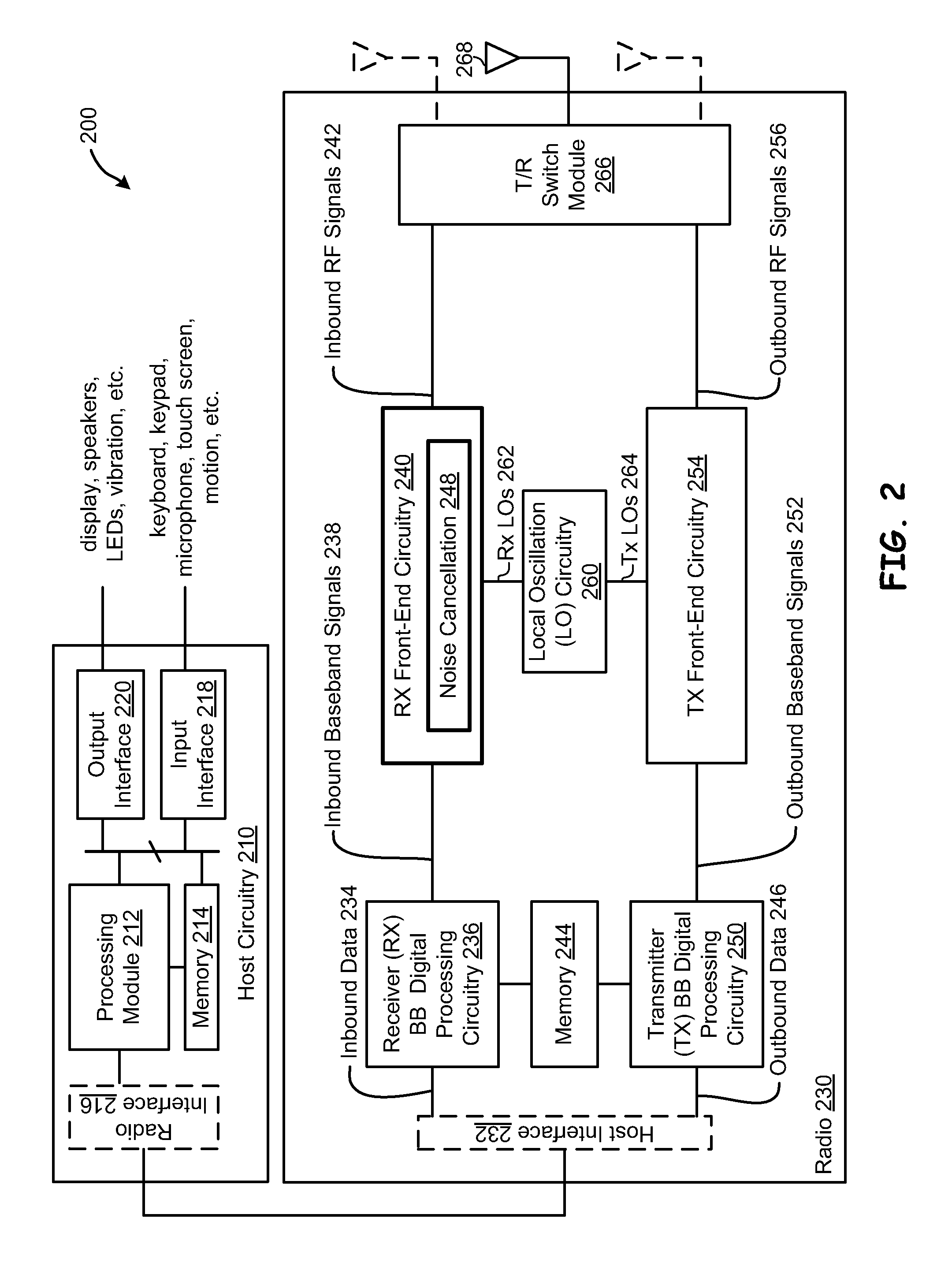Highly linear receiver front-end with thermal and phase noise cancellation
a receiver and thermal phase noise technology, applied in the field of wireless communication, can solve the problems of crowded radio frequency spectrum with unprecedented levels of interference, gain compression in the receiver, and the difficulty of reducing the frequency of the signal,
- Summary
- Abstract
- Description
- Claims
- Application Information
AI Technical Summary
Benefits of technology
Problems solved by technology
Method used
Image
Examples
Embodiment Construction
[0015]The embodiments described below may be practiced in a variety of communication networks that utilize wireless technology for communications between a transmission source or sources and a receiving device utilizing one or more communication protocols to transfer voice, video, data and / or other types of information. The particular technology described below pertains generally to LTE / LTE-Advanced communication standards and other cellular communication standards as applied to mobile devices such as smartphones. However, the disclosed technology is not limited to use with a particular standard and other wireless communication standards and protocols may be applicable for use with the described embodiments and / or other embodiments.
[0016]FIG. 1 is a system diagram illustrating an example wireless communication network connecting a number of different mobile devices to a transmitting / receiving node that transmits and receives RF signals. In FIG. 1, a system 100 is shown that includes...
PUM
 Login to View More
Login to View More Abstract
Description
Claims
Application Information
 Login to View More
Login to View More - R&D
- Intellectual Property
- Life Sciences
- Materials
- Tech Scout
- Unparalleled Data Quality
- Higher Quality Content
- 60% Fewer Hallucinations
Browse by: Latest US Patents, China's latest patents, Technical Efficacy Thesaurus, Application Domain, Technology Topic, Popular Technical Reports.
© 2025 PatSnap. All rights reserved.Legal|Privacy policy|Modern Slavery Act Transparency Statement|Sitemap|About US| Contact US: help@patsnap.com



